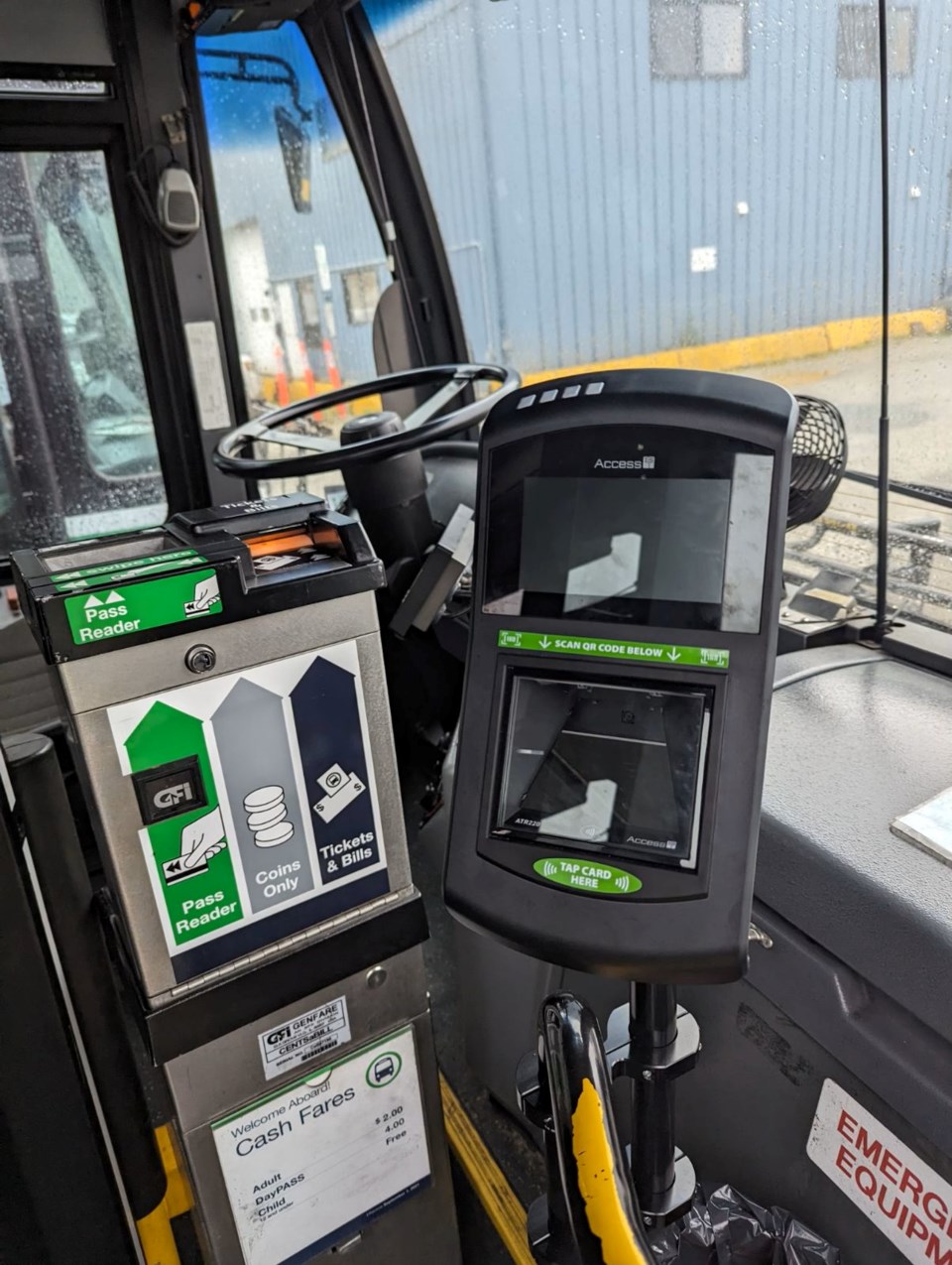Taking a Sunshine Coast Transit (SCT) bus? As of Jan. 10, you can pay using BC Transit’s (BCT) Umo (pronounced YOU-mo) app. Cash fare payments, January 2024 monthly passes and existing paper single-fare tickets will also continue to be honoured.
The new Umo touchless electronic fare system has both a mobile app and fare cards. It isn’t being applied to SCT’s HandiDart system, but BCT spokesperson Ryan Dennis said news on adjustments to fare payment options for that service are anticipated in the coming months.
Using Umo
As of Feb.1, SCT’s monthly bus passes option will change to a “30 day” product. Those will start their day counts on their first use date, and give clients “greater flexibility when it comes to paying for a block of travel time” Dennis told Coast Reporter on Jan. 9. The cost of a 30-day pass is unchanged from that of the monthly pass, $60 for adults and $30 for youth or seniors. Those under 12 years of age travel at no charge on all BCT systems.
Those who want to go fully virtual with transit fare payments using the Umo system need to download the app from Apple App or Google Play, get an account, then purchase fare products. When ready to travel, riders use the app to generate a QR code, then make a ‘touchless’ fare payment by connecting that display with fare validators recently installed on SCT buses. The app also provides riders with transit travel planning tools including real-time bus location information, alerts and maps.
Tap cards are also part of the new system and can be picked up at the Sunshine Coast Regional District’s Field Road office, Sechelt Aquatic Centre, Gibson Public Library, and the Gibsons and Area Community Centre. Travellers can then load funds onto their cards electronically at ca.umopass.com, by calling the service centre at 877-380-8181 or at card vendor locations. The value stored on the card can be used to pay fares using the on-bus validator. Card users can buy individual rides or the 30-day pass product.
Full details, including videos on how to use Umo are available at bctransit.com/umo.
Paying cash ($2 for a single trip, no charge for children under 12) when boarding the bus will continue as a fare payment option.
In its Jan 10 press release, BCT stated, “while it is expected most riders will find one of Umo’s new payment methods a more convenient option, cash will continue to be accepted for those who prefer to use it. Riders interested in continuing to use tickets can continue to purchase them via the vendor network at the new price of $20.00 (for 10 tickets).”
A local transit system change coming with the launch of the new system impacts the full day passes product. Day passes, valid for multiple bus trips on one calendar day at a cost of $4 will continue to be available. A Umo fare payment option will automatically switch the user to the day pass rate when a second bus ride for the same customer is validated. It will notify the user electronically that the change has been made. Cash-paying riders will continue to be able to purchase their Day Pass on the bus by paying $4 when boarding their first bus in a day.
One system, multiple B.C. locations
Through Umo, customers can use their card to pay for bus fares in a variety of locations around the province. The service also rolled out for the Powell River and Squamish transit systems on Jan. 10.
Umo got its start in Victoria in August of last year and is also used in Nanaimo, the Cowichan and Comox Valley Regional District, Campbell River, and Port Alberni. Dennis said BCT will be adding more service locations to the Umo network in the coming six to eight months. Those are slated to include Kamloops, Kelowna, and Prince George.
“Having Umo gives the user access to day pass products on any of the participating systems” BCT’s media relations officer Jamie Weiss told Coast Reporter. While fare costs may be different on other systems (for example a single fare in Victoria is $2.50 and a day pass is $5), he pointed out that Umo can provide cost savings and the convenience of not having to inquire about and find cash to pay for fares when using transit for travel in locations throughout the province.
Umo can’t replace your Compass Card
Umo has similarities with the Compass Card technology that has been in use on the Lower Mainland transit areas since 2015, but the two systems are not linked. Compass and Umo don’t recognize each other as valid forms of payment. While contactless credit cards and digital wallet payments have been accepted for Compass system travel starting last year, BCT bus fares can’t be paid for with debit or credit cards. Dennis said BCT is working to incorporate those forms of payment and while he said he anticipated that payment option would be introduced in 2024, but he could not provide a date.

